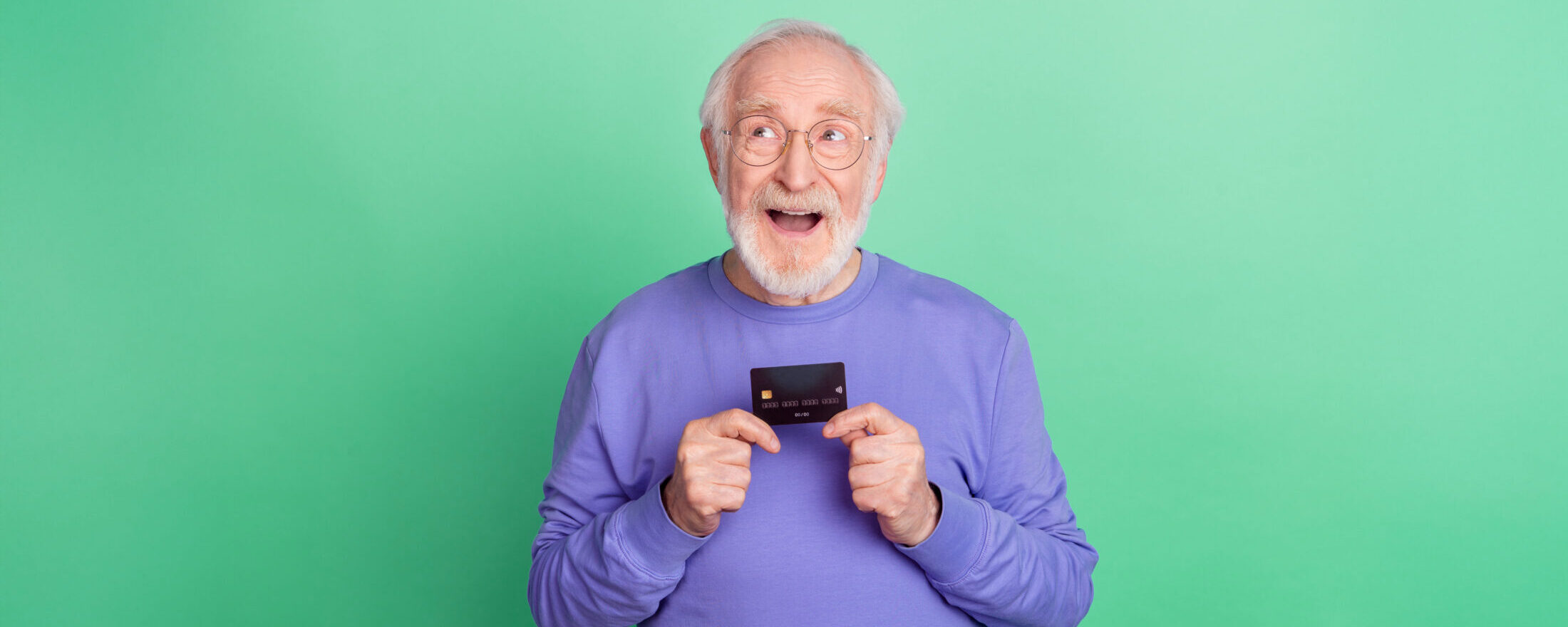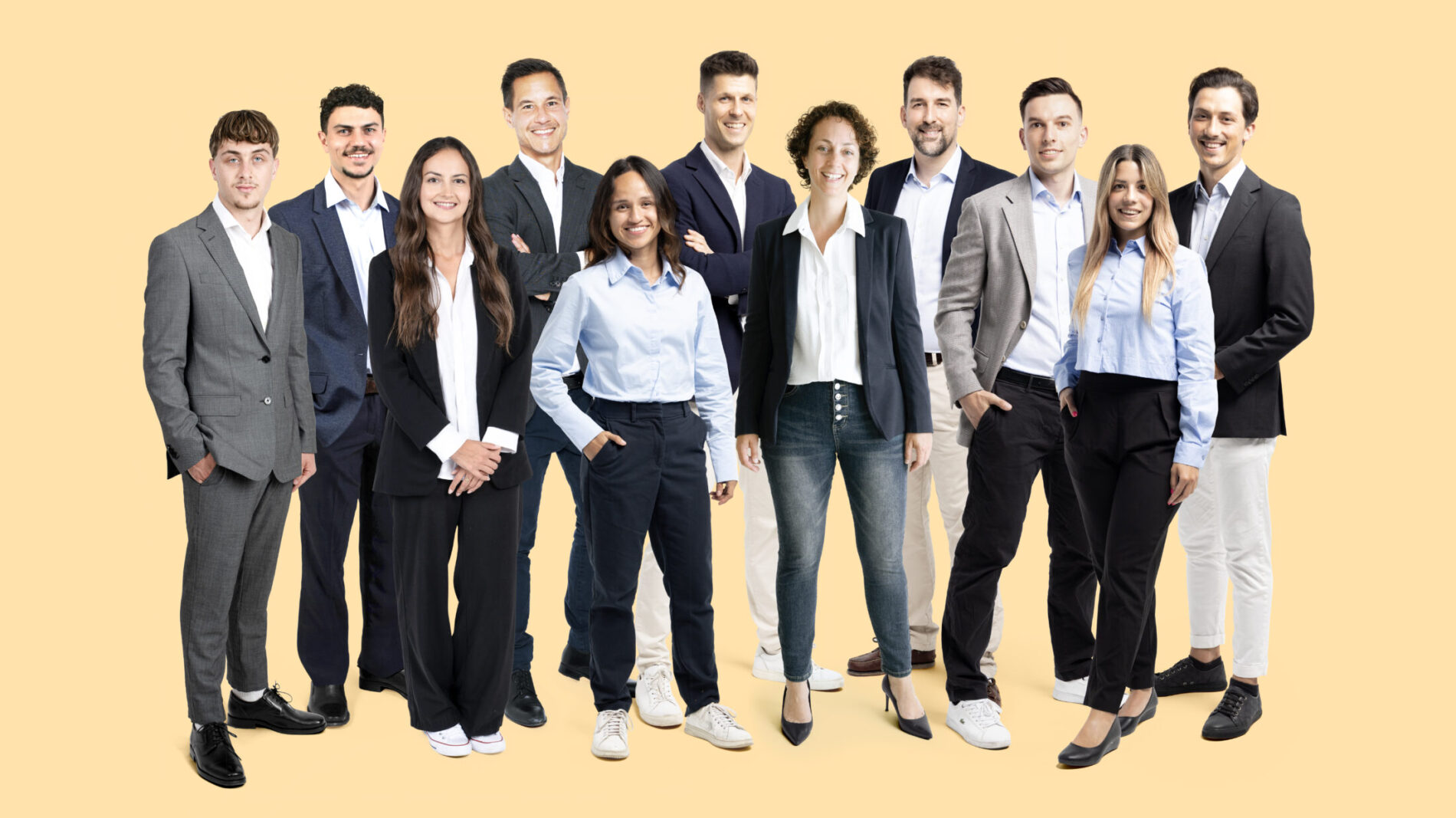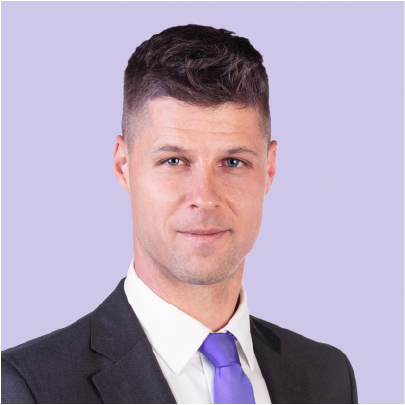Optimizing Pension Fund Contributions with Voluntary Buy-Ins: A Guide for Swiss Employees

Voluntary buy-ins (also known as “purchases”) are one of the most effective tools to optimize your occupational pension contributions, reducing your tax burden today while strengthening your retirement benefits for the future. If you have a contribution gap in your 2nd pillar, it’s worth taking advantage of this opportunity for significant savings.
This article explains how buy-ins work, when they’re allowed, and how to make the most of them — including timing strategies, tax planning tips, and combining them with Pillar 3a. Whether you’re mid-career or nearing retirement, understanding how and when to make a voluntary purchase can make a substantial difference to your long-term financial outcome.
Book a free initial consultation with our experts.
Book a callHighlights
- Voluntary buy-ins into the 2nd pillar (BVG) can reduce your taxable income significantly
- Tax savings are greatest when purchases are staggered across years to break progression
- Buy-ins help close pension gaps caused by career breaks, late entry, or salary increases
- 1e pension plans offer high earners more control and higher return potential for buy-ins
- Contributions are locked until retirement but offer long-term financial and tax advantages
Content
- Optimizing Pension Fund Contributions with Voluntary Buy-Ins: A Guide for Swiss Employees
- That’s what our customers say
- Optimize your pension fund contributions with voluntary buy-ins
- What is a pension fund buy-in and when is it allowed?
- Who can take advantage of voluntary buy-ins?
- Key benefits of pension fund purchases for employees
- Is it always worthwhile making a voluntary pension fund buy-in?
- Strategic tax planning: timing and structuring
- Other ways to optimize 2nd pillar contributions
- Buy-in or Pillar 3a? Why not both?
- Your digital trustee partner
- That’s what our customers say
- That’s what our customers say
Optimize your pension fund contributions with voluntary buy-ins

Switzerland’s occupational pension system (2nd pillar) plays a central role in securing income after retirement. But many employees – especially those with career breaks, late workforce entry, or increases in salaries throughout their career – have so-called “gaps” in their pension coverage. These gaps mean reduced retirement income and increased reliance on personal savings.
Voluntary buy-ins offer a powerful solution: they let you close these gaps while simultaneously reducing your tax burden. For many employees, it’s one of the most effective tools for long-term financial planning.
Book a free initial consultation with our experts.
Book a callWhat is a pension fund buy-in and when is it allowed?

Mandatory contributions
It is mandatory for employees earning above the threshold of CHF 22,680 annually (as of 2025) to join an occupational pension fund (BVG) and thus contribute a set portion of their salary monthly (which the employer matches). These mandatory contributions are determined as a percentage of an employee’s insured salary (i.e., gross salary minus the coordination deduction of CHF 26,460 as of 1 January 2025).
The law defines minimum mandatory contribution rates for different age bands, but many occupational pension funds also set contribution rates which are higher than the BVG minimum.
These contributions essentially form the baseline of your BVG pension savings, but did you know you can often voluntarily contribute more and save on taxes in the process? This is where voluntary pension fund purchases come into play.
Voluntary purchases
A pension fund buy-in or “purchase” is a voluntary contribution you make to your occupational pension fund beyond the mandatory deductions from your salary. Like your regular contributions, these voluntary purchases are also tax deductible.
However, a voluntary buy-in is only permissible if you have a “contribution gap”, which essentially means that your current retirement savings are below the “theoretical maximum” for your age and salary level.
What does “theoretical maximum retirement savings” mean?
Swiss pension funds calculate what your retirement savings would be if you had always earned your current salary since age 25 and contributed to the pension plan accordingly, without any breaks or lower-income years. This figure is your theoretical maximum or “regulatory savings target.”
However, in reality, you most likely experienced one or more of the following:
- Earned less in earlier years, especially early in your career
- Had part-time periods, career breaks, or time abroad
- Joined the pension scheme late
This means your actual accumulated retirement savings are lower than the theoretical maximum as per your current salary, and the difference is the “contribution gap” you can fill with voluntary purchases.
Your pension fund certificate typically shows your purchase potential (i.e., they list the maximum voluntary buy-in you can make), or you can request an updated calculation directly from your pension fund. Keep in mind, though, that this figure is only an estimate. It doesn’t account for factors like vested benefits held elsewhere or earlier self-employment periods, which may limit how much you’re actually allowed to contribute.
For a reliable assessment, it’s best to consult a pension expert who can evaluate your full 2nd pillar situation and help you disclose the details to your pension fund so they can properly calculate and confirm your maximum allowable buy-in.
Withdrawals must be repaid first
It is also important to note: If you have previously withdrawn funds from your pension fund – for example, to purchase residential property – the full amount must be repaid before you can make new voluntary pension contributions that qualify for a tax deduction.
This rule is intended to prevent tax avoidance: Without it, someone could withdraw CHF 100,000 from their pension fund and immediately pay the same amount back in as a voluntary contribution – effectively creating a tax-deductible transfer.
Important: Repayments are not considered tax-deductible contributions. In the case of earlier withdrawals related to self-employment or emigration, no repayment is required – however, a three-year waiting period applies before new contributions become tax-deductible.
Book a free initial consultation with our experts.
Book a callWho can take advantage of voluntary buy-ins?

Most employees have some form of contribution gap, sometimes without even realizing it. That’s because these gaps can arise from common life and career situations, not just from long absences or unusual employment histories.
You’re likely to have a contribution gap if any of the following apply to you:
- You joined the pension fund after age 25: BVG contributions begin at age 25. If you started your career later, or worked in roles without pension coverage early on, you missed out on years of potential contributions.
- You took a career break: Time away from paid employment — such as for parental leave, studies, a sabbatical, unemployment, or working abroad — interrupts your contributions and creates a gap relative to the theoretical maximum.
- You had lower earnings earlier in your career: Because the theoretical maximum is based on your current salary applied retroactively, any earlier years with lower income mean your actual savings would be lower than that target.
- You switched to a plan with higher contribution rates: If your current employer switched to a pension fund with higher savings rates (or you yourself switched to a new employer and changed pension funds), your theoretical savings target would have increased but your past contributions remain unchanged, which results in a contribution gap.
- You’re planning early retirement: This itself doesn’t give rise to a contribution gap, but if you want to retire before the statutory age, you’ll need to finance more retirement years with fewer contribution years. Voluntary buy-ins can help bridge that gap.
Book a free initial consultation with our experts.
Book a callKey benefits of pension fund purchases for employees

If you have a confirmed contribution gap that makes you eligible for a voluntary pension fund buy-in, it’s often worthwhile taking the opportunity. It’s one of the most effective tools for simultaneously reducing your tax bill and strengthening your retirement benefits.
Here are some of the key advantages:
Significant tax deductions
The full amount of your voluntary contribution is deductible from your taxable income in the year of payment. Depending on your income level and canton, this can result in tax savings of 20% to 45% of the contribution amount.
Because Switzerland uses a progressive tax system, your buy-in reduces the top slice of your income, meaning the savings are calculated at your highest marginal tax rate. This makes buy-ins especially attractive for middle- and high-income earners.
Improved retirement benefits
Buy-ins can significantly increase your retirement assets and, depending on your fund, may also improve survivors’ and disability benefits. This can make a real difference in your monthly pension or capital payout at retirement.
Tax-exempt growth
Funds within your occupational pension grow tax-free while invested. However, they are taxed at the time of withdrawal: lump-sum payouts are taxed at a reduced rate, while regular monthly pension payments are taxed as income. Despite this, the tax deferral and upfront deductions often make buy-ins a highly tax-efficient strategy overall.
Strategic flexibility (especially in a 1e plan)
If your income exceeds CHF 136,080 (as of 2025), you can make buy-ins into a 1e pension plan, which offers greater flexibility and enables high earners to choose individual investment strategies. This allows you to pursue higher returns while still benefiting from full tax deductibility.
Book a free initial consultation with our experts.
Book a callIs it always worthwhile making a voluntary pension fund buy-in?

While voluntary buy-ins offer significant tax and retirement advantages, they’re not always the right move for every situation. Before committing, consider the following limitations and risks:
- Limited liquidity: Money paid into the 2nd pillar is typically locked until retirement. You can only access it early for specific reasons (e.g. home ownership, self-employment, emigration). If you might need the funds sooner, a buy-in could strain your personal liquidity.
- Opportunity cost: Pension funds often apply conservative investment strategies and limited returns, especially in the mandatory portion. If you’re a risk-tolerant investor, you may achieve higher long-term returns elsewhere (e.g. equities, real estate or even pillar 3a retirement funds).
- Underfunded pension funds: If your pension fund has a coverage ratio below 100%, any voluntary contributions may be exposed to loss or redistribution. In such cases, buy-ins may be suspended or discouraged. Always check the financial health of your fund before making a purchase. See our latest review of the Best Occupational Pension Funds in Switzerland in 2025 to compare options.
- Withdrawal restrictions: If you plan to withdraw your pension capital as a lump sum, any buy-in must be made at least three years before withdrawal, otherwise the tax deduction may be reversed.
Book a free initial consultation with our experts.
Book a callStrategic tax planning: timing and structuring

The way you time and structure your buy-ins and withdrawals can have a big impact on the overall tax benefit. Here are a few key points to keep in mind:
- Stagger your contributions: To maximize tax savings, spread large buy-ins over several years. This allows each portion to offset income taxed at a higher marginal rate, resulting in greater total savings than a single large buy-in in one year.
- Avoid last-minute buy-ins before lump-sum withdrawals: If you plan to withdraw your pension as a lump sum, you must wait at least three years after a buy-in. Otherwise, the tax deduction may be reversed. This restriction doesn’t apply if you opt for monthly pension payments.
- Plan withdrawals strategically: Lump-sum pension withdrawals are taxed separately and at reduced rates, but still progressively. Spreading them across two or more tax years, or coordinating them with other taxable capital like Pillar 3a, can help reduce the overall tax burden.
- Coordinate with your spouse: If both spouses are employed and eligible to buy in, compare pension plans and prioritize contributions to the better-performing one. If both plan lump-sum withdrawals, staggering them across different tax years can reduce the combined progressive tax burden, especially in high-tax cantons.
Book a free initial consultation with our experts.
Book a callOther ways to optimize 2nd pillar contributions

While voluntary buy-ins are the most common way for employees to optimize their occupational pension, there are a few additional strategies worth considering:
Choosing a higher savings scale
Some pension plans let you choose between different savings options. Opting for a higher plan increases your monthly contributions and improves both your tax deductions and retirement benefits.
If you’re a business owner or HR decision-maker, read our guide on Choosing the Right Pension Fund for Your Company for advice on selecting flexible, tax-efficient plans your employees can benefit from.
Lowering the coordination deduction
The coordination deduction is a fixed amount (CHF 26,460 in 2025) subtracted from your gross salary to determine your insured salary in the 2nd pillar.
If your employer allows it to be reduced or removed, more of your salary becomes insured, which leads to higher contributions and better pension coverage. This is especially impactful for low-income or part-time workers whose insured salary after the coordination deduction might otherwise be very low.
Making full use of a 1e pension plan
If you’re in a 1e plan, you can optimize contributions by choosing a more aggressive investment profile and making full use of the plan’s contribution flexibility. This is only relevant for high earners above the BVG 1e eligibility threshold of CHF 136,080 (as of 2025).
Book a free initial consultation with our experts.
Book a callBuy-in or Pillar 3a? Why not both?

When deciding between a voluntary pension fund buy-in and contributing to Pillar 3a, several factors come into play — including tax savings, insurance coverage, investment flexibility, and access to funds.
Pillar 3a offers more flexibility in how and when you contribute, greater freedom in choosing investments, and control over beneficiary designations. It’s ideal for employees with fluctuating income or those who value autonomy in managing their retirement savings. However, the annual contribution limit (CHF 7,258 in 2025) is relatively low.
That said, if you’re self-employed and not affiliated with a pension fund, you can contribute up to 20% of your net income, up to a maximum of CHF 36,288 (2025), making Pillar 3a a much more substantial option. In these cases, choosing between Pillar 3a and a voluntary 2nd pillar buy-in becomes more complex and depends on your income level, risk tolerance, and desired insurance coverage.
Note: Starting in 2026, you’ll also be able to make subsequent Pillar 3a purchases to fill gaps for missed years from 2025 onward, offering more flexibility for those with inconsistent earnings or breaks in saving.
The verdict?
For most employees with additional capacity, a pension fund buy-in allows you to contribute significantly more and typically results in far greater tax savings, especially at higher income levels. It also includes built-in insurance coverage for disability and death, though this coverage is less customizable.
However, the two strategies aren’t mutually exclusive. In fact, they work best when combined: first max out your Pillar 3a for flexibility, then consider a voluntary pension fund buy-in to boost long-term savings and reduce your tax burden further.
Self-employed individuals should carefully assess whether it’s better to remain outside the occupational pension system in order to retain access to the higher Pillar 3a contribution limit. Nexova can help you evaluate the trade-offs and design a retirement savings plan aligned with your goals.
Book a free initial consultation with our experts.
Book a callYour digital trustee partner

Whether you’re looking to reduce your taxes, boost your retirement savings, or prepare for early retirement, voluntary pension fund buy-ins can be a powerful tool. But understanding how and when to use them is essential to getting it right.
At Nexova, we help Swiss employees and high earners get the most out of their occupational pensions. We calculate your buy-in potential, determine your tax savings, and ensure compliance with all legal requirements. We can also help you assess whether a 1e pension plan is right for you.
With the right strategy and guidance from Nexova, voluntary buy-ins can become a key pillar of your financial planning — boosting your pension while lowering your taxes along the way.
Ready to optimize your pension strategy? Contact us today for a free consultation.
FAQ
Answers at a click
What’s the maximum I can voluntarily contribute to my pension fund?
Your pension fund statement typically shows your current buy-in potential. This figure reflects the gap between your actual retirement savings and the “theoretical maximum” you would have accumulated if you’d always earned your current salary.
However, keep in mind that the calculation doesn’t always account for vested benefits held elsewhere or earlier self-employment periods. For a precise determination, it’s best to have your situation assessed by a pension expert.
Can I make buy-ins just before retirement?
Yes, but only under specific conditions. If you plan to withdraw your pension capital as a lump sum, any voluntary buy-ins must be made at least three years in advance. Otherwise, the tax authorities may reverse the deduction. However, if you’re opting for a monthly pension instead of a lump sum, there is no waiting period, and buy-ins are allowed even shortly before retirement.
What happens if the pension fund is underfunded?
If your pension fund’s coverage ratio is below 100%, it means the fund has more liabilities than assets. In such cases, voluntary buy-ins may be suspended; or worse, your contributions could be affected by restructuring measures such as reduced benefits or redistribution.
Always check your fund’s financial health before making a voluntary purchase. Your pension statement or HR department should provide this information.
Are 1e pension plans a better option for high earners?
Yes, for high earners seeking more control and higher return potential, 1e plans are often the most attractive pension structure available. If you earn more than CHF 136,080, your employer may offer a 1e pension plan for extra-mandatory contributions. These plans let you choose your own investment strategy, avoid cross-subsidization, and still benefit from full tax deductibility.
Is it better to buy into my spouse’s fund or mine?
If both you and your spouse are eligible to make buy-ins, compare the two pension funds carefully. Factors like interest rates, conversion rates, survivor benefits, and flexibility can differ significantly. In many cases, focusing contributions on the stronger-performing fund can deliver better long-term value. A pension advisor can help you evaluate both plans and decide where your money has the greatest impact.
That’s what our customers say
Your feedback matters
Mr. Merz has a very broad knowledge and was able to help me with all my questions. The conversation was very pleasant and very informative for me. Thank you for your support.
Uncomplicated or serious? Both here. A young, smart team is at work here, offering excellent services, highly uncomplicated and competent. Instead of a prestigious reception area, expensive offices and a few small gifts, you offer fast and competent services. For me as a one-man company, this is exactly what I need.
I have been a Nexova customer for some time now and so far I am very satisfied! Thanks to the digital working methods and high responsiveness of the client managers, little time is lost in the daily process in particular. The prices are also very fair. Nexova handles the annual financial statements for me, including the tax balance sheet. The processes are standardized, which is a great advantage for audits (AHV and taxes). The two founders are two young, innovative guys and very serious.
The friendly and competent Nexova employee was able to answer my questions about company car taxation quickly and specifically. Thank you very much for this!
When I founded my company a year ago, I needed a reliable fiduciary partner. In addition to pure accounting, Nexova also offers me very good advice on all aspects of labor law. Thanks to the E-Post solution, I no longer even have to worry about my company mail and can focus purely on my service activities. My contacts at Nexova are always very friendly and pleasant to deal with. The complete package is simply TOP and I can only recommend Nexova!
Top company & friendly owners. A highly recommended trustee.
Very good and competent advice!
Professionally at a very high level. They are very good with Excel and could also support us with automation of processes.
I had a few questions about remote work and was advised super and free of charge. Thank you very much!
Very good service. Good and competent advice with friendly staff. I can definitely recommend
The Nexova team is very professional and I felt they always had my best interests at heart. I highly recommend Nexova and will continue to refer my clients to them and trust them with my business.
I am impressed with their outstanding service, especially in the field of accounting services, they demonstrate a professional approach and exceptional attention. As a lawyer, I have found Nexova to be a valuable partner in the financial world.
I had an excellent consultation with Nexova AG regarding withholding tax. Their expertise is remarkably extensive and their guidance was invaluable, I highly recommend their services. A first class experience.
The Nexova Team is an important partner to our startup, enabling us to pass all of our accounting, tax and payroll duties. We specially value their expertise with Startups and flexibility, which allows us to plan and manage our financials effectively and to focus on the bottom line of our operations.
We are very satisfied with Nexova as our trustee. Thanks to the Teams group chat, I can always count on very fast response times (of a few minutes). The Teams Chat group is great. With our old trustee, we had to write mails and always had to wait a long time for an answer and on top of that we were charged for every little question. Fortunately, this is not the case with Nexova.
Nexova solved my problem with a non-paying tenant quickly and efficiently. I was simply overwhelmed with the situation and glad for the competent legal advice. Nexova handled everything from the reminder with threat of termination, to representation in court, to the police eviction quickly, efficiently and also inexpensively. Many thanks for the valuable help.

